


Built in the 16th century by the Portuguese, the Galle Fort was a strategic fortress that protected the commercial activity of Galle from external powers. It was, however, in the 17th-century Dutch era that the fort took a shape that we are all familiar with today, with fortified positions, known as ‘Bastions’, that still stand as testament to colonial influence and design. When the British conquered this southern town, the fort was further fortified and today, there are 14 bastions, all of which once played a major role in defending the port of Galle from conquests.
Stroll along the ramparts of this UNESCO World Heritage Site and explore the key bastions of the Galle Fort.
The northern part of the fort plays host to 4 prominent bastions, which has some interesting designs, and each with its own unique characteristic.
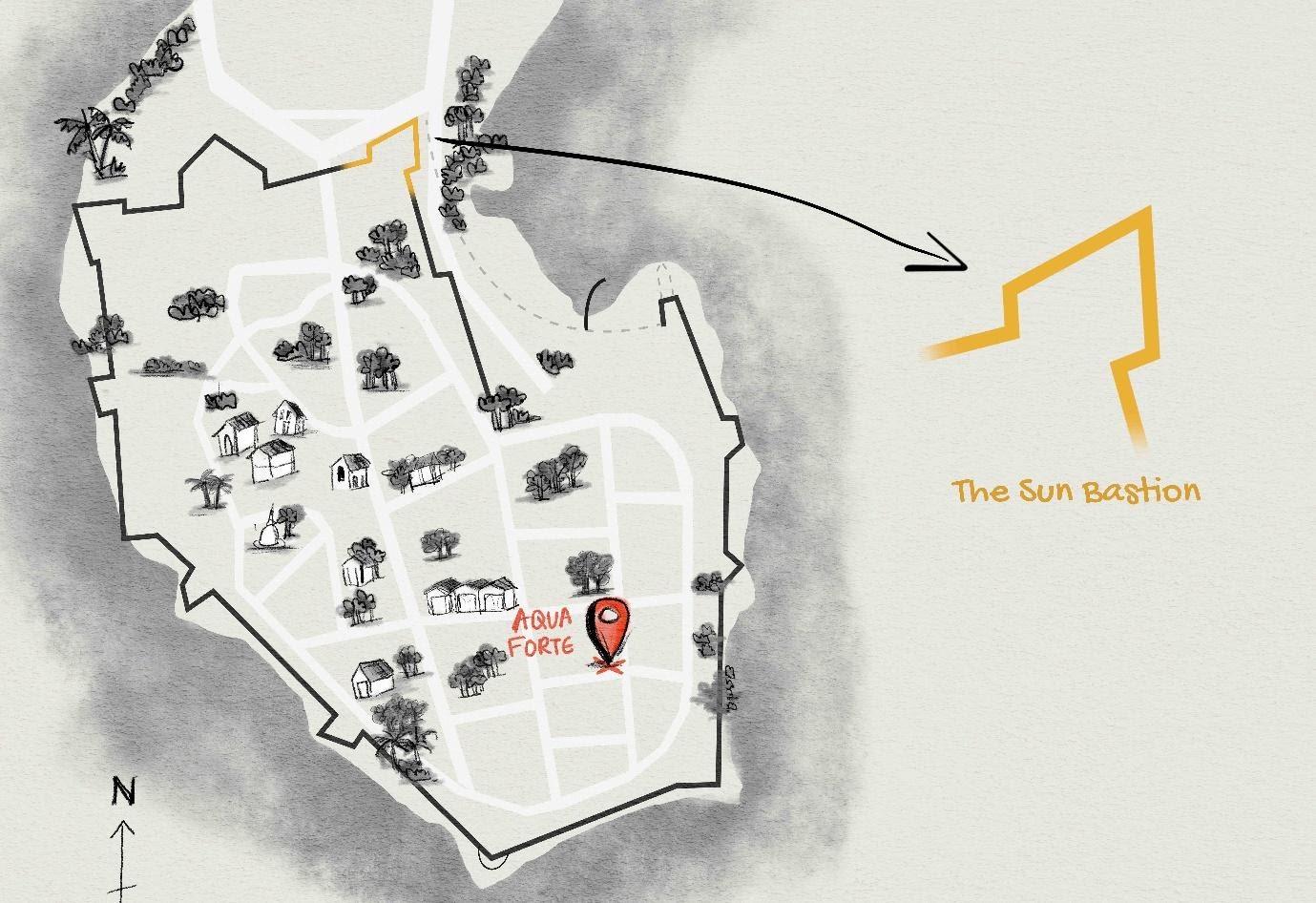
The original construction is believed to date back to the year 1620, during the time of the Portuguese. However, in 1667, the Dutch took over and renamed it Zon (Sun) Bastion. The bastion was continuously improved and was at its strongest in 1760, when it had 15 cannons, along with a very strong base.
The Sun Bastion is a good viewing point to admire the Galle International Cricket Stadium from.
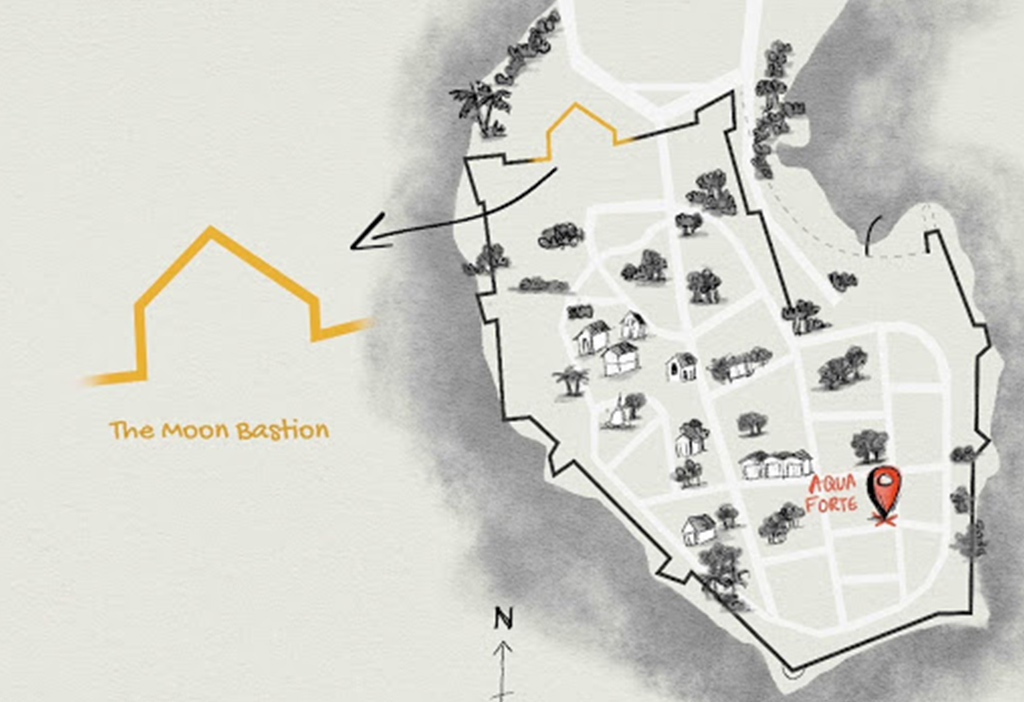
Built by the Portuguese, the Dutch strengthened the Moon Bastion with a strong base and firepower. In 1760, the bastion had 16 cannons pointed to the north, should any invader attempt a campaign from inland.
Some of the highlights of this particular bastion is the unhindered view of the ocean, and the large clocktower. The clocktower was a donation by prominent Dr Anthonisz, and is more than 130 years old. Moreover, this bastion is the closest to the new entrance that was built during the British period.
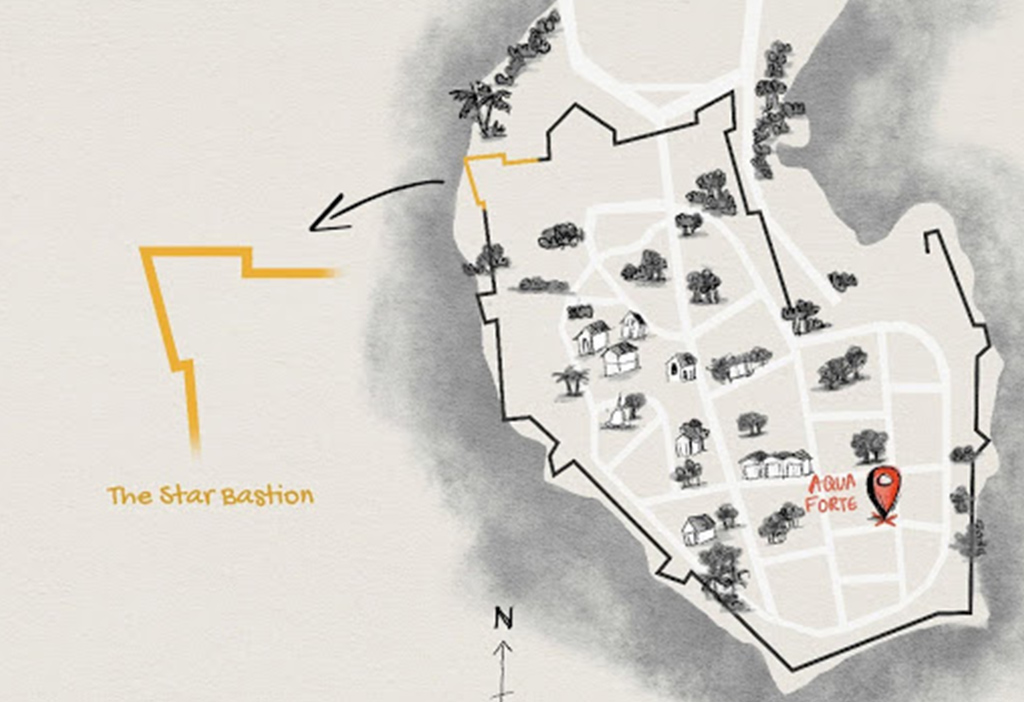
The Star Bastion though initially built by the Portuguese, became prominent during the Dutch period, when it was strengthened with a base and 6 cannons in the late 17th century. Interestingly though, this bastion was previously called Sea Bastion. However, in 1667, it was renamed as Star Bastion.
The Star Bastion is one of the least prominent of the main northern bastions, since it has little strategic value when compared to the other fortifications.
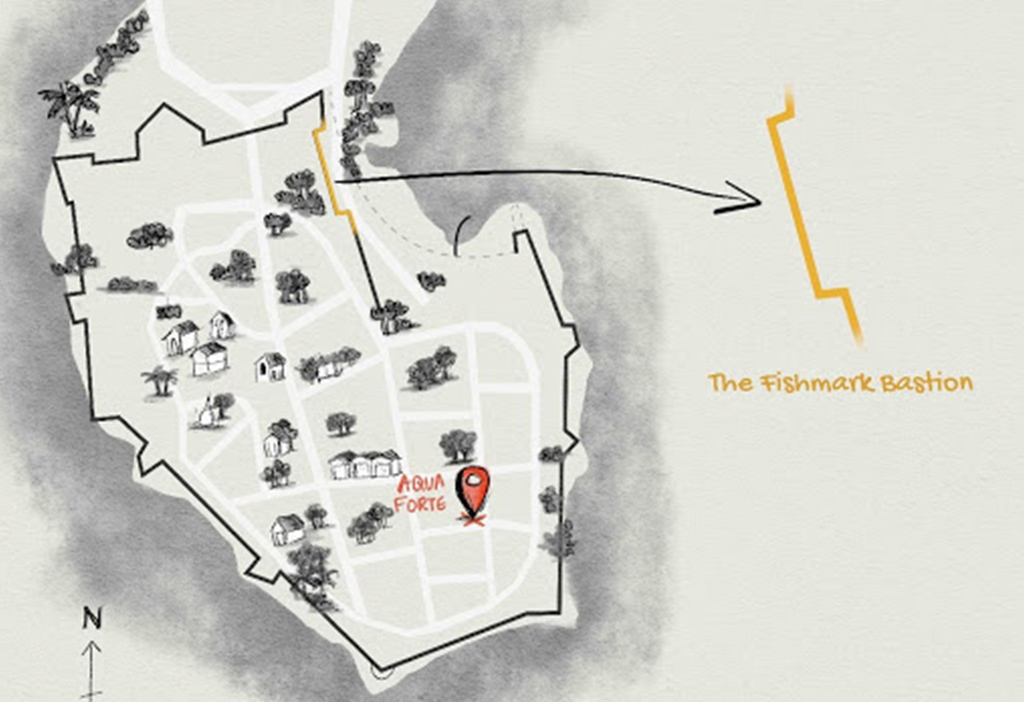
The Fishmark Bastion, also located on the northern side of the fort was built to protect the local fishing crafts. Often overlooked by travellers, the bastion is often regarded as one of the least important fortifications from the colonial era.
The eastern part of the fort consists of 5 other bastions, which were considered the most important of all bastions, since it was directly facing the port of Galle, making it the primary fortifications against foreign invaders.
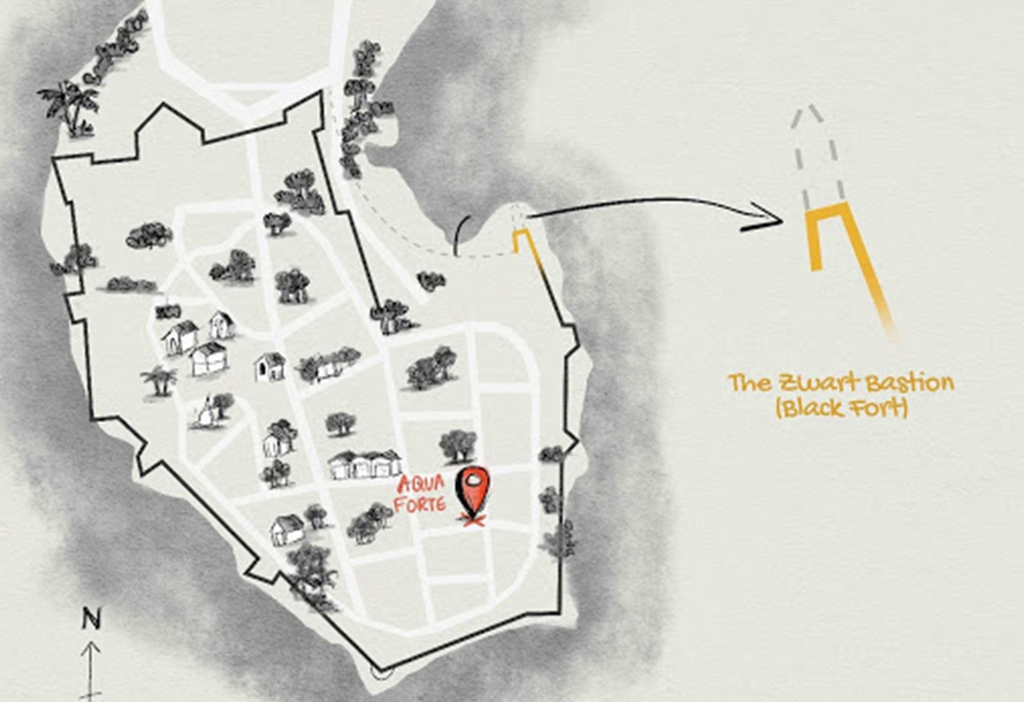
This is the one of the few bastions on the eastern stretch of Galle Fort that is in a dilapidated form, and the only one that was never fortified by the subsequent colonisers. In other words, the structure still has its original Portuguese design.
The Dutch named the bastion Zwart Fort (Black Fort) because of its dark colours. Although not strengthened by the Dutch, it is believed that a secret tunnel was built by the Dutch as a quick way of leaving the Galle Fort. Although, the supposed tunnel has still not been found.
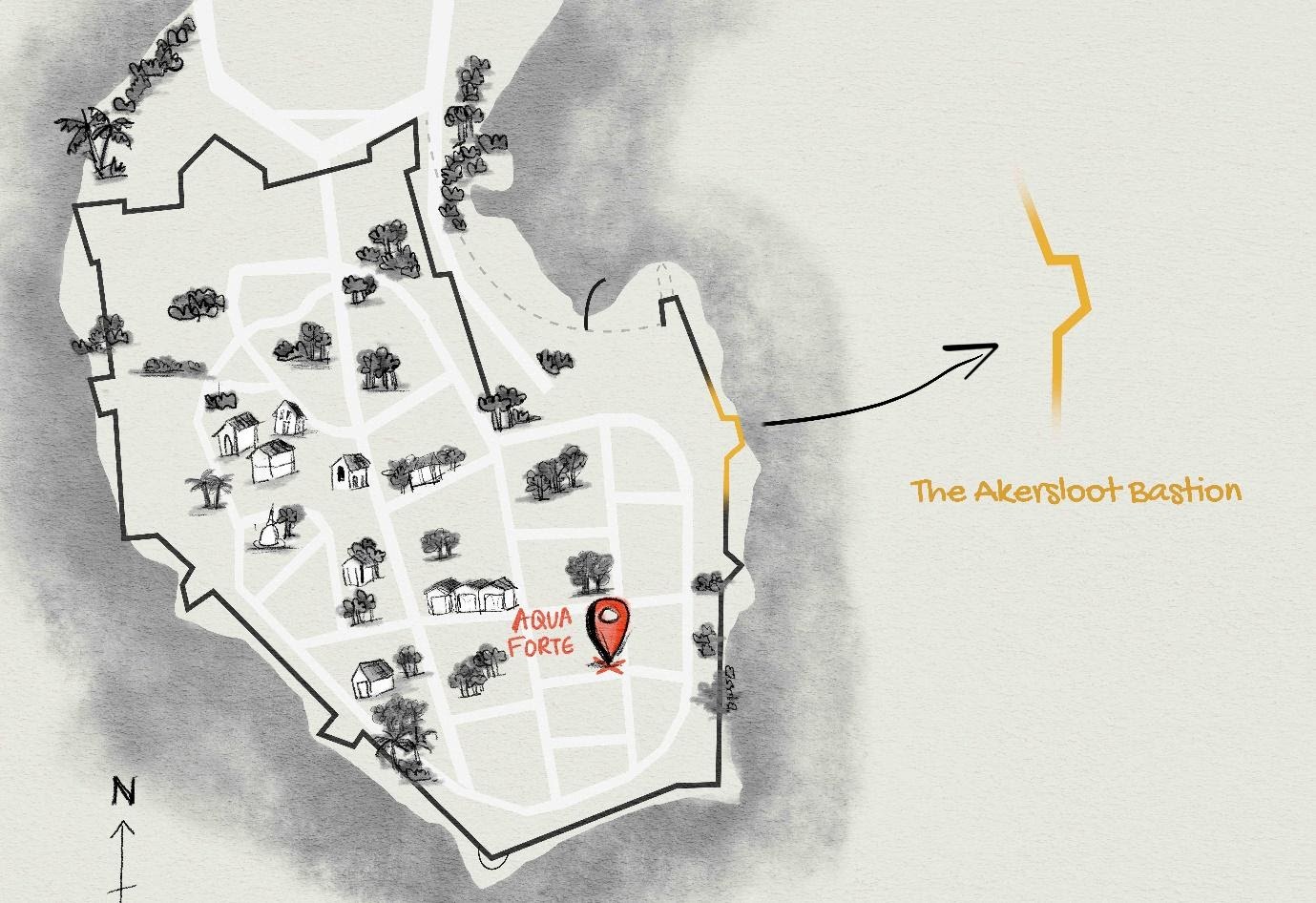
Akersloot Bastion is solely of Dutch origin, and is located right behind the prominent Old Dutch Hospital. This was easily one of the most important bastions in the whole of the Galle Fort, as it was the best point to observe the harbour. So much so that the British used it as the Harbour Master’s quarters. 7 cannons were stationed here during the height of power.
Today, it is one of the best places to view the Unawatuna Bay and Rumassala Hill in the distance. Each year, the Galle Literary Festival is held here, where the old fort transforms into a vivid display of literary agents, book worms and workshops – attracting travellers from around the country and the world!
Do you want to know more about authentic Italian cuisine, best wine pairings and secret offers at AQUA Forte? Subscribe to our weekly newsletter and stay up to-date!
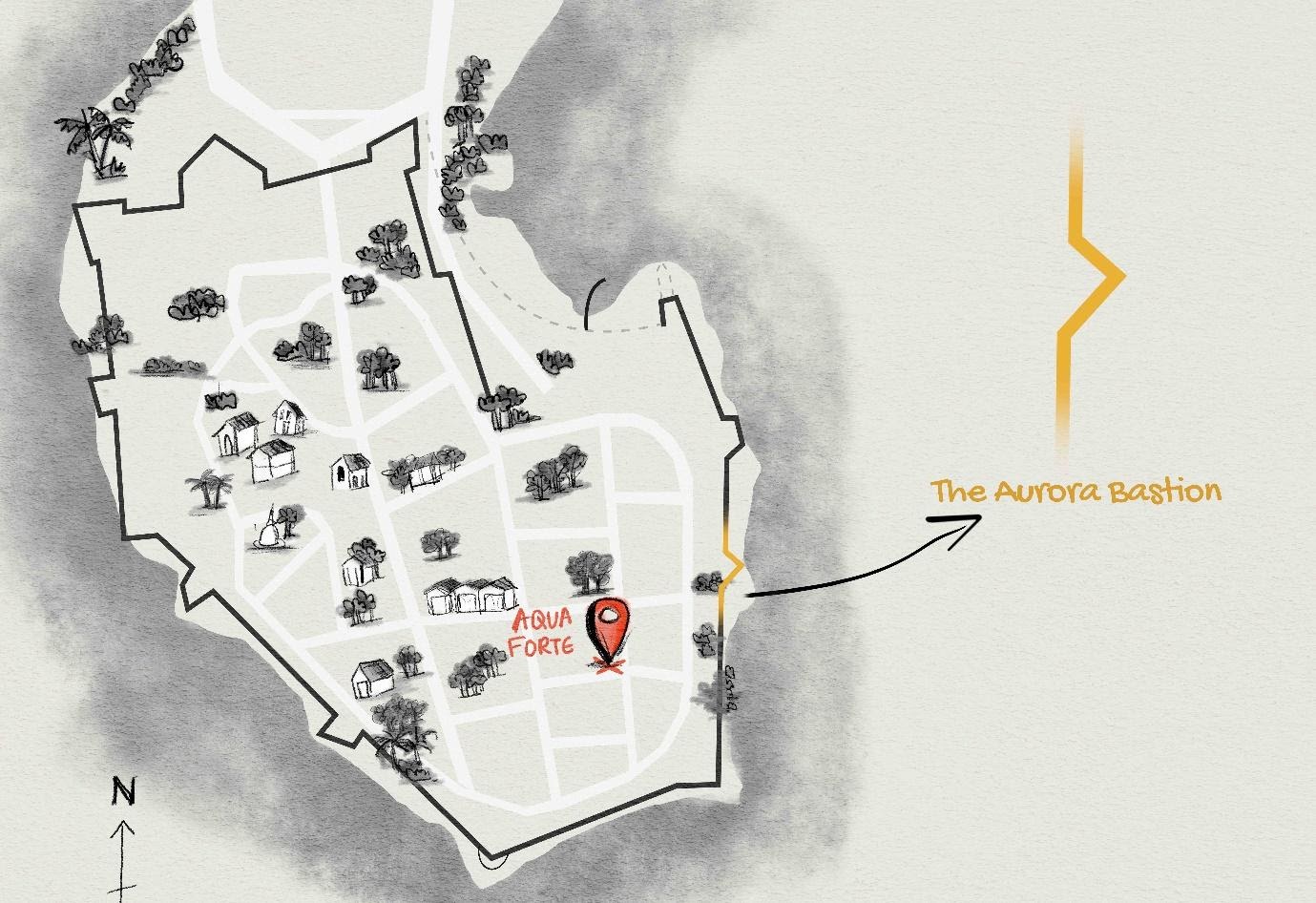
Right next to the Akersloot Bastion lies the Aurora Bastion. With Dutch roots, the fort was named after the Roman God Aurora, as the views from here are nothing short of spectacular. During its time of service under the colonials, it was believed to have 6 cannons by 1760.
This bastion is the nearest one to our exquisite Italian restaurant; AQUA Forte, which makes it an ideal place to take a break and enjoy a delectable meal before heading out to explore the other prominent bastions.
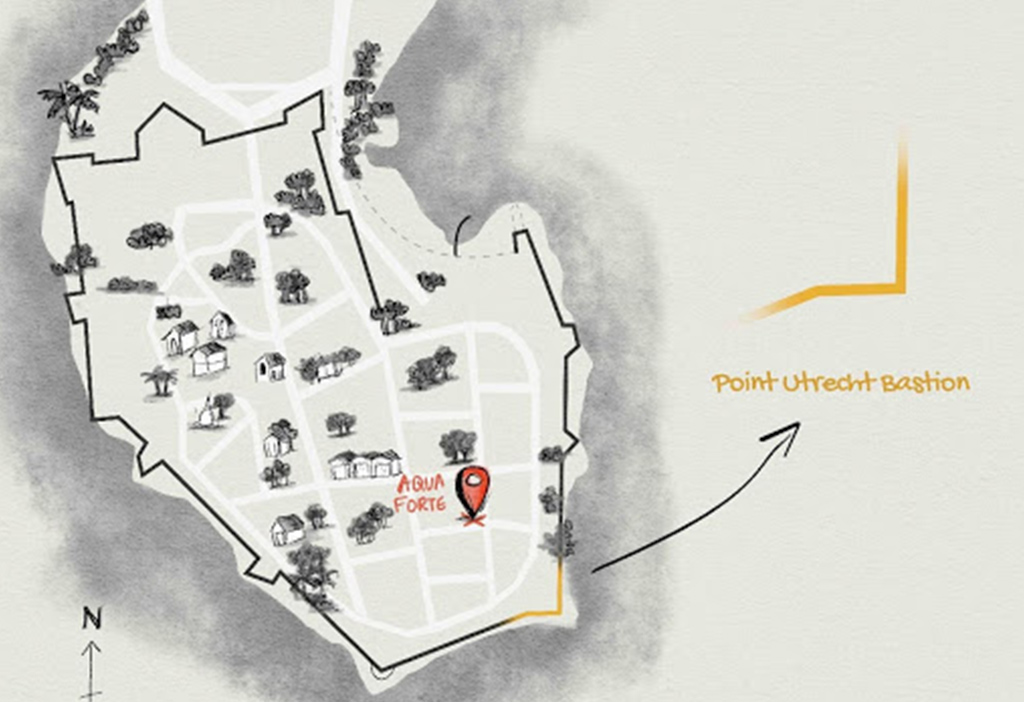
This bastion is named in honour of the first clergyman of the Dutch Reformed Church, who hailed from the Dutch town of Utrecht in 1641.
Originally, it held 6 cannons, and was like any other bastion in the Galle Fort. However, during the British period, the original Galle lighthouse that stood at Flagrock Bastion was destroyed by fire, and a new lighthouse was built on this bastion in 1939. During the Second World War, this lighthouse was heavily fortified.
Apart from the lighthouse, the other highlight of this bastion is its access to the Galle beach, which can be accessed by a small flight of steps behind the lighthouse, and is perfect for a refreshing dip after you explore the Galle Fort and its bastions.
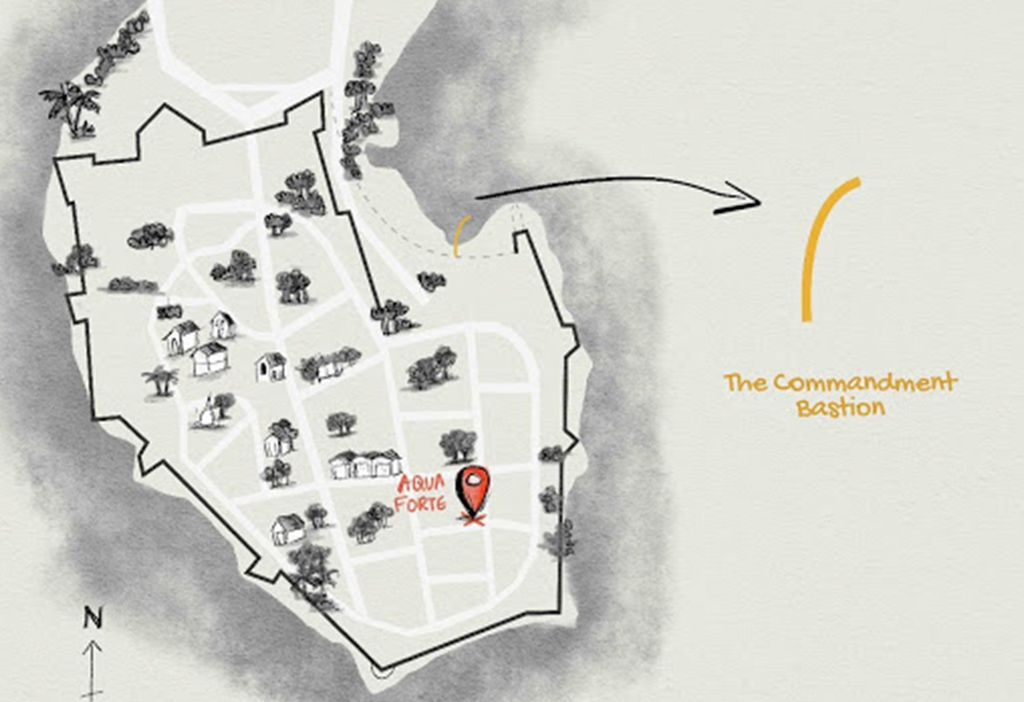
Just like the Fishmark Bastion, this is one of the more overlooked bastions, and one of the few that can be visible from the outside of the Galle Fort. The name is derived from its close proximity to the Dutch Commander’s quarters.
One of the highlights of the Commandment Bastion is that it is the closest fortification to the original entrance of the fort. As you enter from this side, you’ll be see the intricate coat of arms of the Dutch East India Company on one side, and its British counterpart on the other.
The southern part of the fort only has one important bastion – the flagrock bastion!
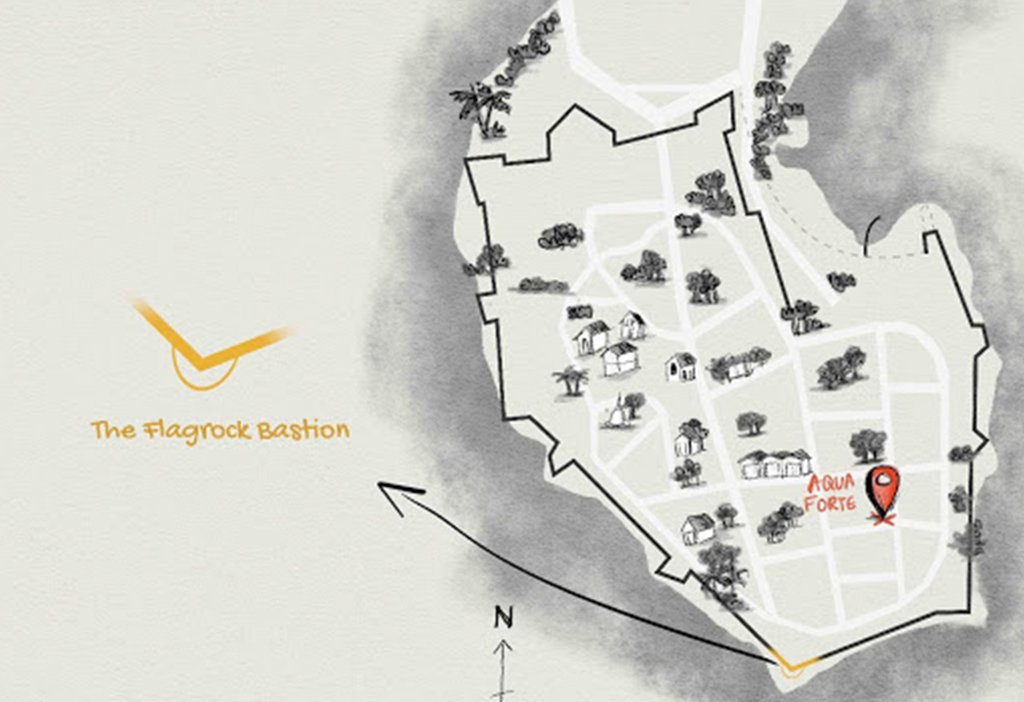
The Dutch would hoist their flag from this point until the British took over the Galle Fort in 1796. Flagrock Bastion also held the first lighthouse that was originally built in 1848, but subsequently burnt down in a fire in the 1930s.
It’s one of the best places to witness the spectacular sunset. Moreover, this spot is also popular for daring locals to partake in a thrilling cliff dive!
The western side of the Galle Fort consists of 4 bastions that were equally important during the colonial era.
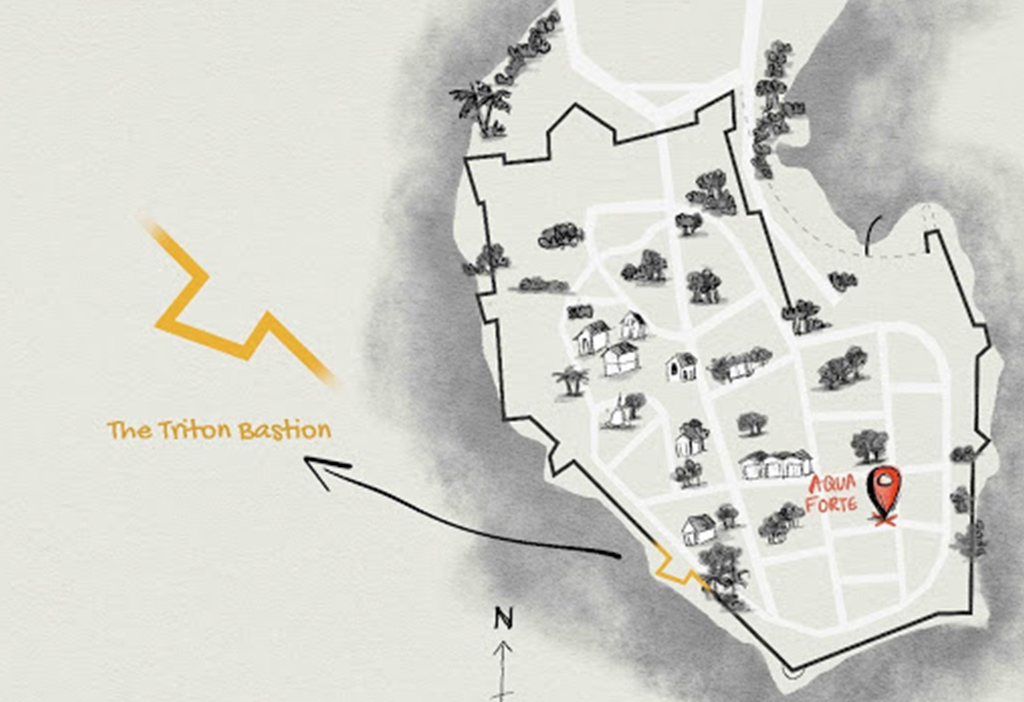
The Triton Bastion was not a typical fortification, but an area that once held a windmill! Built by the Dutch, this windmill was used to collect water to clean the streets of the fort.
Even today, you still can see its foundations, although it does have a stark resemblance to a bunker.
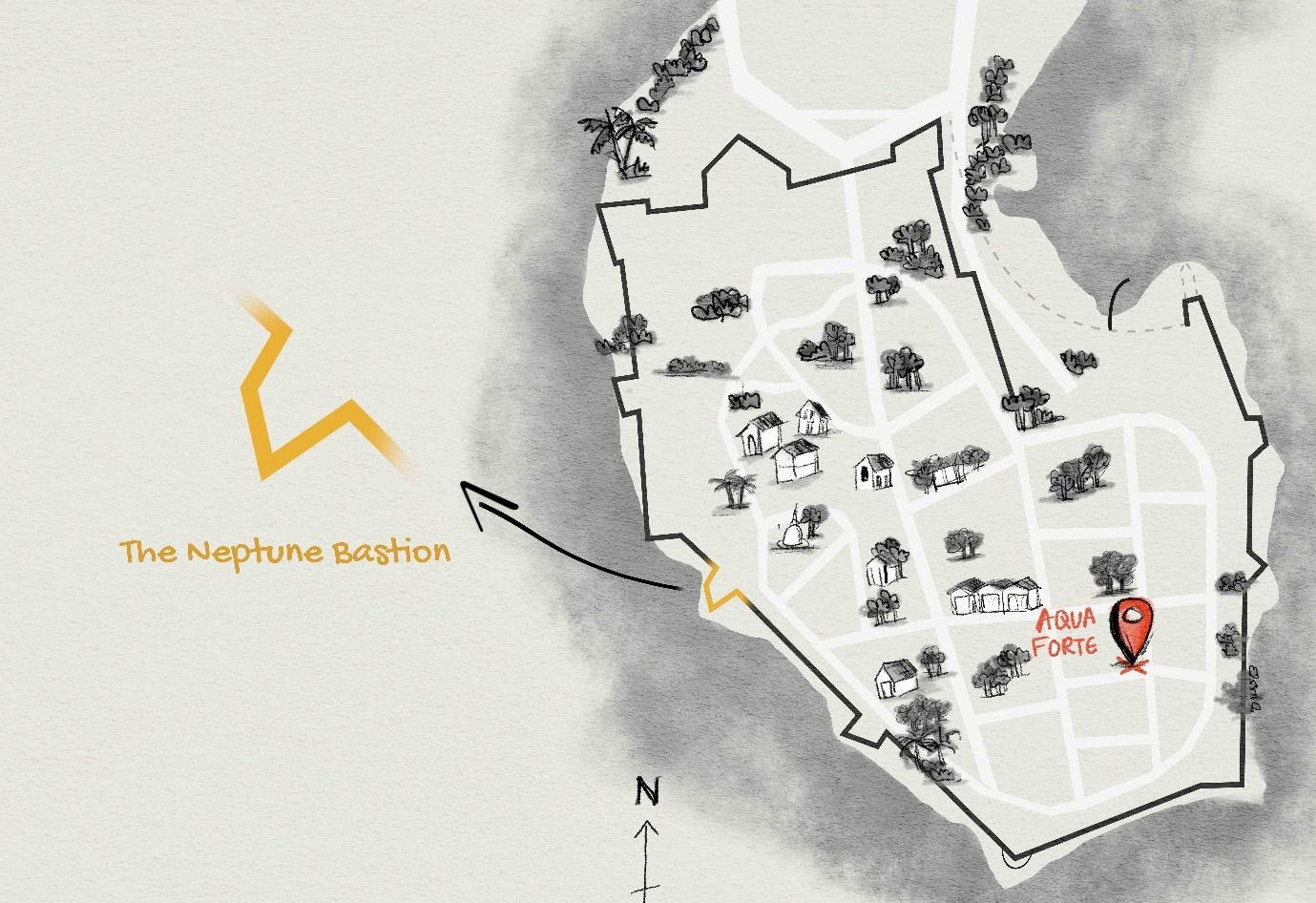
Neptune Bastion is a unique fortification, where you can see the ruins of the original gun platform. Take a break from your explorations and witness the crashing blue waves on one side, and the historic buildings of the fort on the other.
Do you want to know more about authentic Italian cuisine, best wine pairings and secret offers at AQUA Forte? Subscribe to our weekly newsletter and stay up to-date!
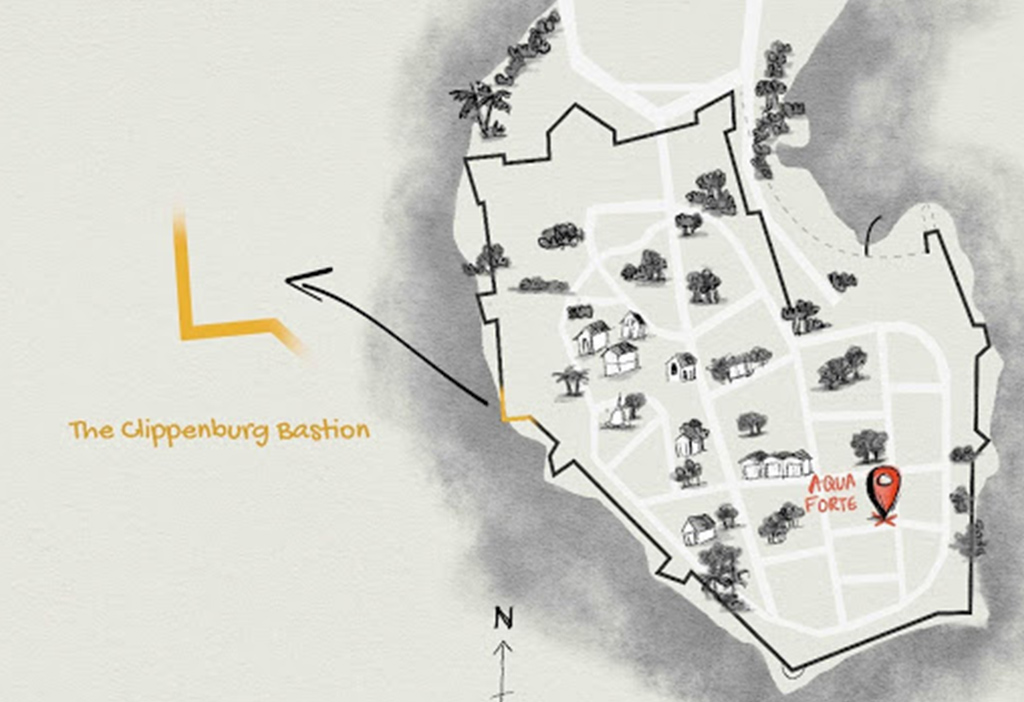
The name derives from the Dutch word ‘Clippen’, which translates to ‘jutting into the sea’. Although barely used by the Dutch, the British fortified it and converted it to the Clippenburg Bastion. This would then be used as a signal station for vessels travelling in and out of the island. Even today, you can still see the structure of the bastion.
As you stroll along the ramparts near this bastion, you’ll often see locals engaging in an exciting game of cricket in the evening.
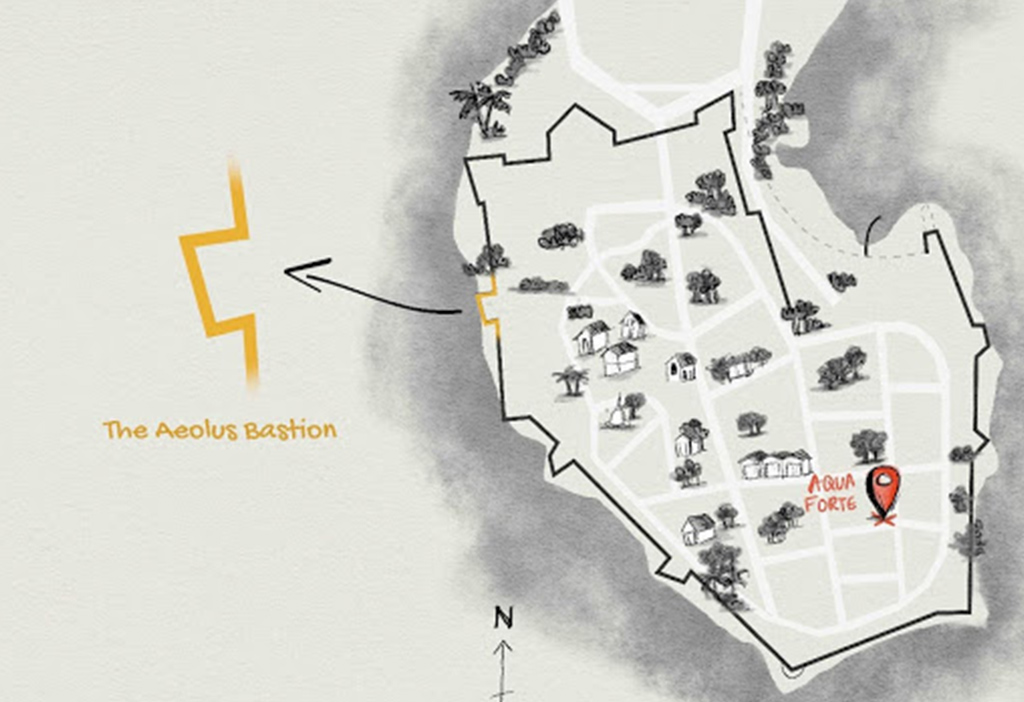
The name of the bastion translates to ‘sea breeze’ and is home the Sri Lankan Army. Aelous Bastion provides a great access point to reach the Sri Sudharmalaya Buddhist Temple as well.
If you’re famished from exploring the bastions of the Galle Fort and its other attractions, head to AQUA Forte to enjoy a fine dining experience. Our authentic Italian cuisine, comprising of scrumptious dishes and exquisite wines are the perfect way to end your day in Galle.